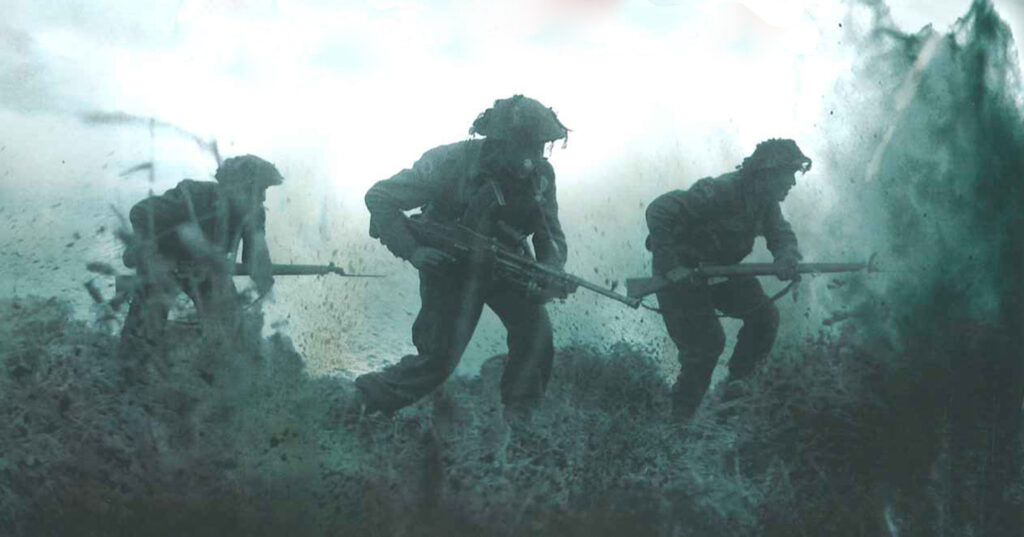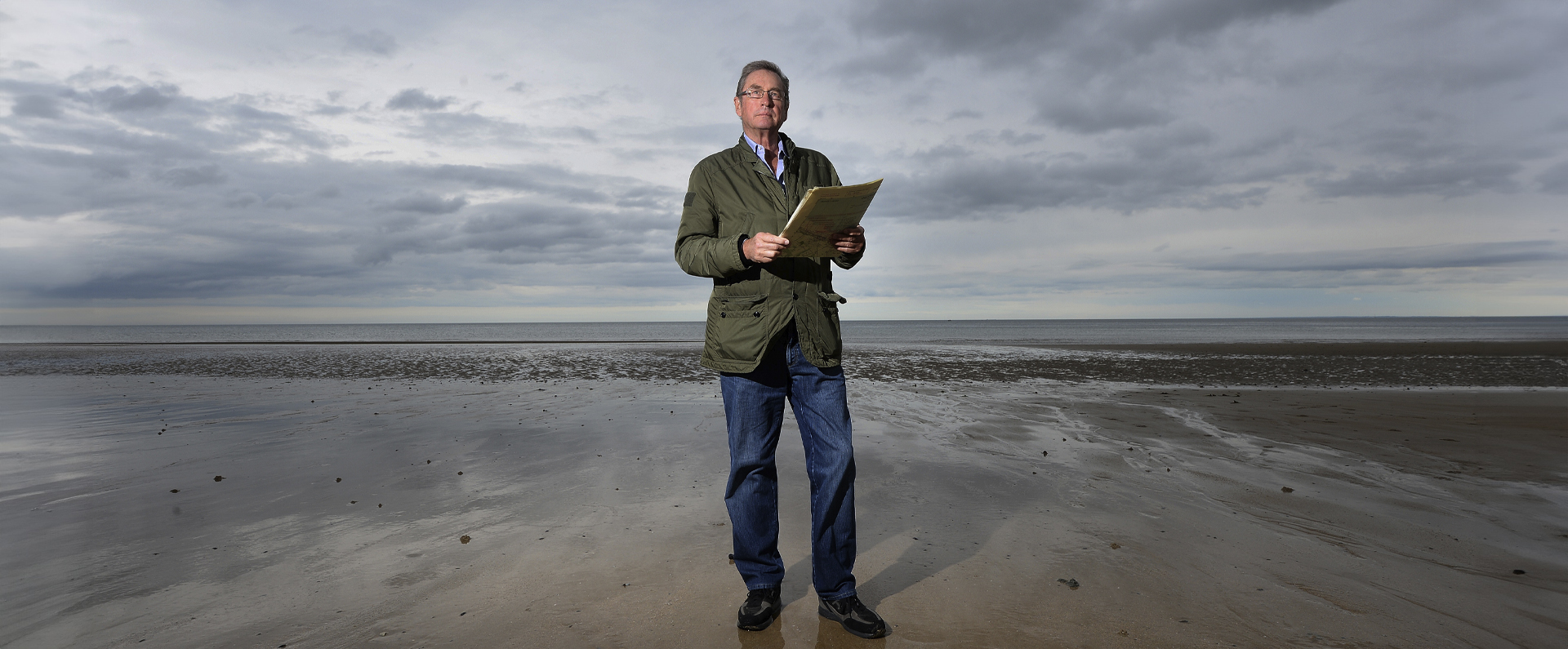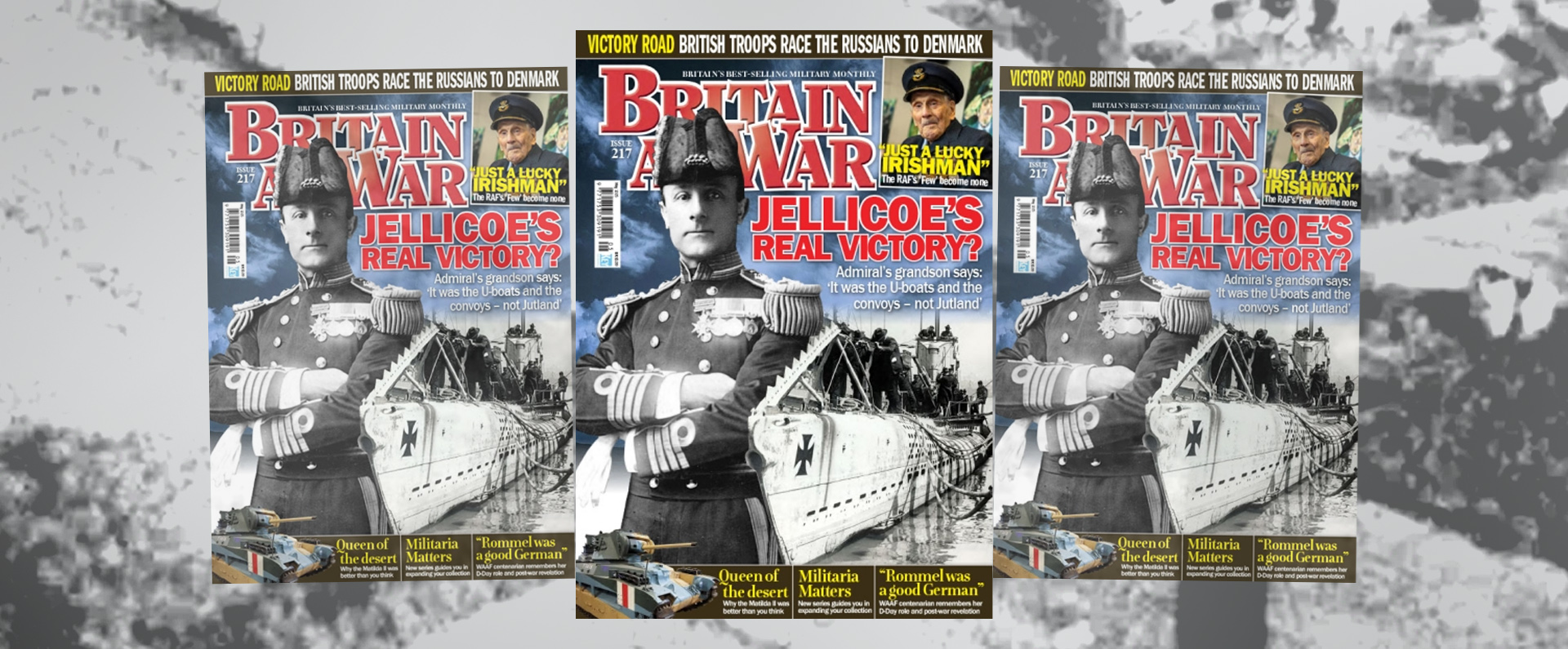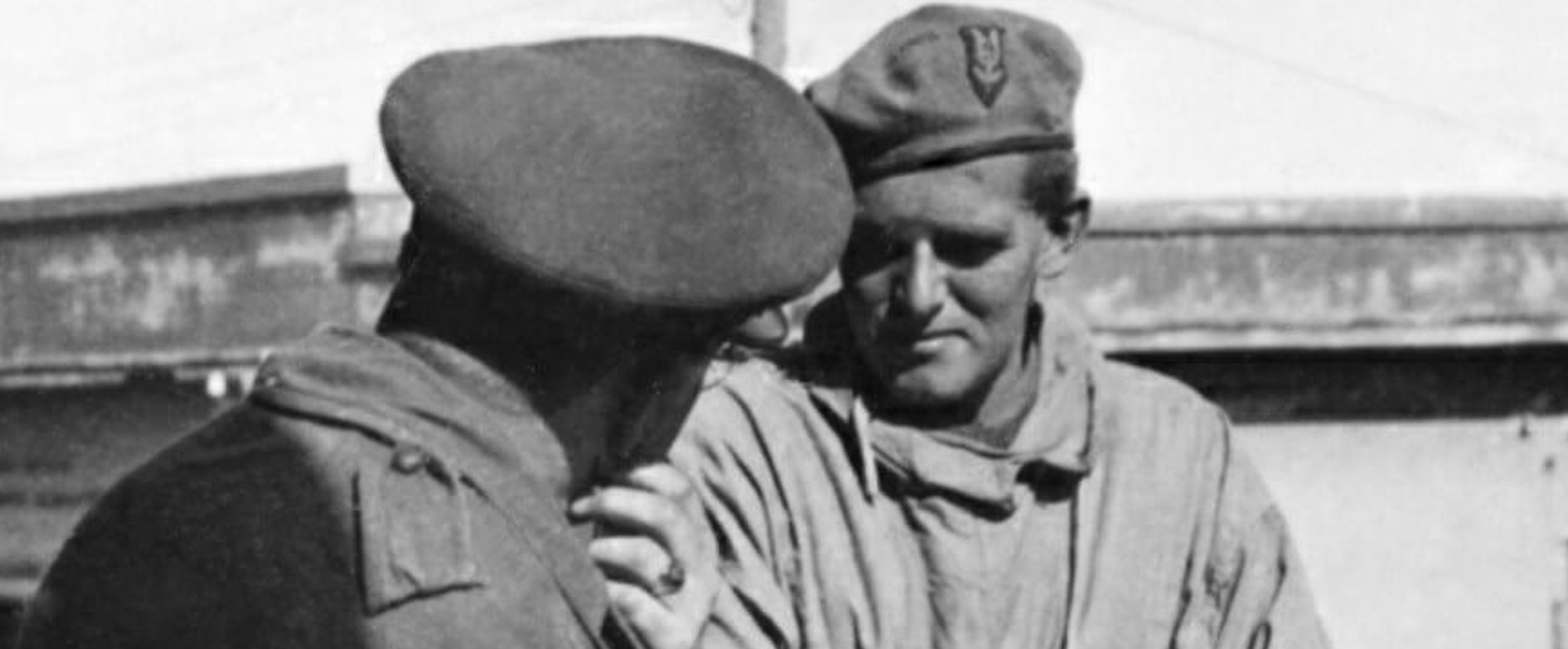
There are, I have always believed, two types of valour: spur-of-the-moment bravery and what I call cold courage, which involves planning.
I’ve nothing but admiration for those decorated for impulsive bravery: a serviceman who, in the heat of battle, risks his life to save a wounded comrade.
Many such men have rightly been awarded the Victoria Cross, Britain’s top military bravery medal.
But my new book, Special Forces Heroes, deals with those awarded medals for acts of premeditated courage.
It takes a special kind of valour to go undercover behind enemy lines or to be part of a small, elite unit on a hit-and-run mission against a far larger force.
If it goes wrong, he knows that, at best, he might be captured and kept as a prisoner of war for months, even years.
At worst, he might be seized, tortured, mutilated and killed.
Not everyone mentioned in my book was a member of the Special Forces, but the two accounts I’ve chosen here do relate to the SAS.
The first – the Battle of Mirbat in Oman in 1972, which saw a handful of SAS men fight off 250 heavily armed, rebel fighters – is not well-known, but is considered by a growing number of military historians to be the regiment’s finest hour.
The second involves what must surely be the most celebrated moment in the regiment’s history – the storming of the Iranian Embassy in 1980.
BATTLE OF MIRBAT
(JULY 19, 1972)
Trooper Sekonaia Takavesi
Distinguished Conduct Medal
Oman, a long-standing ally of Britain, is a forgotten war – not least because the SAS’s involvement in protecting the country’s sultan from the Communist rebels of the People’s Front for the Liberation of the Occupied Arab Gulf (PFLOAG) was top secret.
Not even the families of those fighting knew where they were.
But by July 1972, the regiment had been training and advising local troops in the small Gulf state for a year.
Operation Jaguar, designed to consolidate their positions, establish new ones and disrupt rebels lines of communications and resupply was going well.
Then, at dawn on the morning of July 19, the rebels hit back, with 250 of their elite fighters attacking the small town of Mirbat on the Arabian Sea.
They were heavily armed and their aim was to overrun the town and slaughter everyone in their path.
In the town’s garrison were just nine SAS soldiers, equipped with one 25-pounder field gun from World War II, one mortar, a 0.50mm machine gun and a few general purpose machine guns.
When the adoo (Arabic for enemy forces) attacked, all the SAS men were in the British Army Training Team (BATT) house, 500 yards from the gun pit containing the 25-pounder.
But when they heard mortar rounds and machine gun fire from an outlying observation point, they moved swiftly.
A Fijian trooper called Talaiasi Labalaba ran to the gun pit and, though it normally took a three-man team to operate it, managed to open fire by himself, sighting the gun down the barrel and firing into the advancing rebels at near point-blank range.
But when Labalaba was wounded, hit in the chin by a 7.62 mm round from a Kalashnikov rifle, it seemed only a matter of time before first the gun and then the garrison were over-run.
But for the decisive action of his fellow Fijian, Sekonaia Takavesi, it probably would have been.
Known as ‘Sek’ or ‘Tak’ to his friends, he became – in the words of his Army superiors – ‘a legend in his own time within the SAS’. Grabbing his rifle and a few magazines, he sprinted to the gun pit and found his friend badly injured, his jaw smashed, but still continuing to fire the gun.
Realising they needed more support, Takavesi left the gun pit, running to a nearby building to persuade an Omani gunner, Walid Khamis, to join them. Now there were three: Labalaba and Khamis operating the 25-pounder, while Takavesi used a self-loading rifle (SLR).
But as enemy fire pounded the gun pit, Khamis slumped backwards. He had been shot in the stomach and was writhing in agony. The two Fijians were on their own again, with Takavesi helping his friend, time and again, to remove the hot shell case, ram in a new one, close the breech and fire.
Soon it was Takavesi’s turn to take a bullet, which threw him backwards on to the sandbags. He was in great pain and losing a lot of blood, but he remained conscious.
Labalaba propped him up and handed him his SLR. Labalaba, who was peering down his rifle sights picking off the advancing enemy, realised he was almost out of ammunition for the 25-pounder.
As he tried to reach a 60mm mortar positioned nearby, he was shot fatally in the neck.
In the BATT house, Captain Mike Kealy heard the 25-pounder fall silent and became worried the position had been taken. With a volunteer, Tommy Tobin, a trained medic, the commanding officer dodged bullets and ran to the gun pit, where they witnessed a gruesome scene.
The dead body of Labalaba lay face down on the ground, Khamis was lying on his back, bleeding profusely.
The only one still able to fire was Takavesi, who, still propped on the sandbags, was also seriously wounded. Every time he fired his SLR, he grimaced with pain as the rifle kicked back into his body.
As Tobin turned to get his medical pack, he was shot in the face and fell to the floor mortally wounded.
Pete Scholey, a former SAS man and author of SAS Heroes: Remarkable Soldiers provides an account of what happened next.
‘Tak called to Captain Kealy for more ammunition and the two men began to battle for their lives. An adoo popped up at the edge of the gun emplacement, ready to shoot Tak, and Kealy blasted him with his SLR.
‘Another appeared from a ditch close to their position and Kealy cut him down, too.
‘Kealy took out adoo gunmen as they slunk round the walls of the fort and Tak concentrated on those coming from the direction of the perimeter wire.
‘The adoo were close enough to sling grenades, which were bouncing and exploding close to the walls of the gun pit. Kealy froze for an instant as a grenade landed inside the bunker right in front of him. Mercifully, it failed to explode.’
Just as the situation appeared hopeless, the two men and their comrades had two strokes of luck.
First, the low cloud lifted high enough for two jets from the Sultan of Oman’s air force to fly over the scene, strafing the adoo with cannon fire and, at one point, dropping a 500lb bomb on the by now retreating rebels.
Takavesi, who was later involved in the storming of the Iranian Embassy, would later describe the scream of those jets as ‘the best sound I ever heard’.
Kealy was unaware of the second stroke of luck, which resulted from his early radio message to SAS headquarters that Mirbat was under attack. His men, B Squadron, had been due to go home on the very day of the attack.
This meant their replacements from G Squadron were at Um al Quarif, just 65km west of Mirbat. G Squadron was ordered into action.
Twenty-two men, along with their equipment, were taken by trucks to the airstrip at Salalah. Once the mist had lifted, they were airlifted in helicopters to the beach on the edge of Mirbat.
As Kealy used a lull in the fighting to tend to his men, G Squadron, led by Captain Alastair Morrison – another SAS hero who would go on to play a vital role in the successful storming of a hijacked Lufthansa jet at Mogadishu airport in 1977 – fought its way through the town.
The adoo were in full retreat, leaving 40 dead and ten wounded.
It had been an incredibly close run thing, but thanks to the bravery of men such as Takavesi, Labalaba and Kealy, it proved to be a decisive turning point in the sultan’s battle with the rebels.
The Battle of Mirbat is an extraordinary story and I share the sense of anger among SAS men that the bravery of the solders involved has never been properly recognised.
As a result, I have sponsored the Battle of Mirbat Memorial at the National Memorial Arboretum in Staffordshire.
The valour of men such as Takavesi, Labalaba (who many believe deserves a posthumous Victoria Cross) and Kealy – three of the great Special Forces heroes – should never be forgotten.
IRANIAN EMBASSY SIEGE
(MAY 5, 1980)
Sgt Peter Winner (SAS)
* Name changed at his request
Snapper as he was known to friends, was never awarded a specific gallantry medal, but his role in the storming of the Iranian Embassy in London and his 18-year career with the regiment more than earns him his place here.
As he and his team – clad head-to-toe in black – waited nervously in the rear garden of the embassy, the siege had already been going on for five days.
But, half an hour earlier, the stakes had been raised significantly when the body of the embassy’s press officer, Abbas Lavasani, had been pushed out of the front door. Clearly the time for patient negotiation with the Khuzestan terrorists, still holding 20 people hostage, had come to an end.
Within three minutes of Lavasani’s death being confirmed, Prime Minister Margaret Thatcher had given the go-ahead for the SAS to be used. ‘The time has come to use the final option,’ she said. Barely 30 minutes later, a loud explosion heralded their arrival.
‘Go, go, go,’ screamed a voice in Winner’s earpiece. They were on their way in and he was leading from the front as they smashed down the rear door.
Above them, another team abseiled down to a second floor window, while at the front a third team was blasting their way through the first-floor balcony windows.
Between them, the SAS teams had to search and clear more than 50 rooms on six floors – and reach the hostages before they came to harm.
‘All feelings of doubt and fear had disappeared. The adrenaline was bursting through my bloodstream. Fearsome! My heavy body armour suddenly felt as light as a T-shirt,’ recalled Winner in his anonymous autobiography, Soldier ‘I’ SAS.
Winner and his team headed to the basement, wrenching ladders that had been put there to block there progress out of the way, hoping they hadn’t been booby-trapped. Mercifully, there was no explosion. Tossing a stun grenade into the darkness, they began shooting off locks and clearing rooms.
In one, Winner saw a dark shape crouching in a corner. He fired a burst of 20 rounds from his MP5 machine gun. There was a clang as the crouching figure crumpled and rolled over. It was a dustbin. The cellars were clear.
A more real threat, however, awaited his team as they made their way into the embassy’s smoke-filled hallway and joined those shepherding the terrified hostages to safety.
‘I joined a line, six or seven steps up from the hallway. There were more explosions. The hysterical voices of women swept over us. Then the first hostages were passed down the line; they looked shocked and disorientated, their eyes streaming with CS gas.’
Suddenly there was a shout from higher up: ‘This one’s a terrorist!’ ‘A dark face ringed by an Afro-style haircut came into view, the body clothed in a green combat jacket. He was punched and kicked as he descended the stairs. He was running afraid. He knew he was close to death.
‘Then I saw it – a Russian fragmentation grenade, the detonator cap protruding from his hand.’
Winner raised his machine gun to fire, but then realised the bullets would pass straight through the terrorist, possibly hitting his colleagues.
‘Instinctively, I raised the MP5 above my head and in one swift, sharp movement brought the stock down on the back of his neck. I hit him as hard as I could. His head snapped back and for one fleeting second I caught sight of his tortured, hate-filled face.’
He collapsed down the remaining stairs, hitting the carpet in the hallway as a crumpled, sagging heap. The sound of two magazines being emptied into him was deafening.
But as he twitched and died, his hand opened and the grenade rolled out. Winner and his colleagues waited for the inevitable explosion.
‘I stared at the mechanism for what seemed like an eternity and what I saw flooded the very core of me with relief and elation. The pin was still in the lever. It was all over.’
The SAS’s success at the Iranian Embassy was headline news all over the world, helped by it being captured on live TV.
Of the 20 hostages in the building when the SAS went in, 19 were rescued and one killed by terrorists. Of the six terrorists, only one, Fowzi Nejad, was left alive. He was jailed for life. After serving 28 years, he was released on parole earlier this year.
• Special Forces Heroes by Michael Ashcroft (Headline, £20) is linked to the four-part Five TV series of the same name. www.specialforcesheroes.com
To order a copy at £18 (P&P free), call 0845 155 0720. All royalties donated to Help For Heroes, supporting servicemen injured in Iraq and Afghanistan.
Read this article on MailOnline.com
Download a PDF of this article
For more information, visit:
LordAshcroftOnBravery.com


